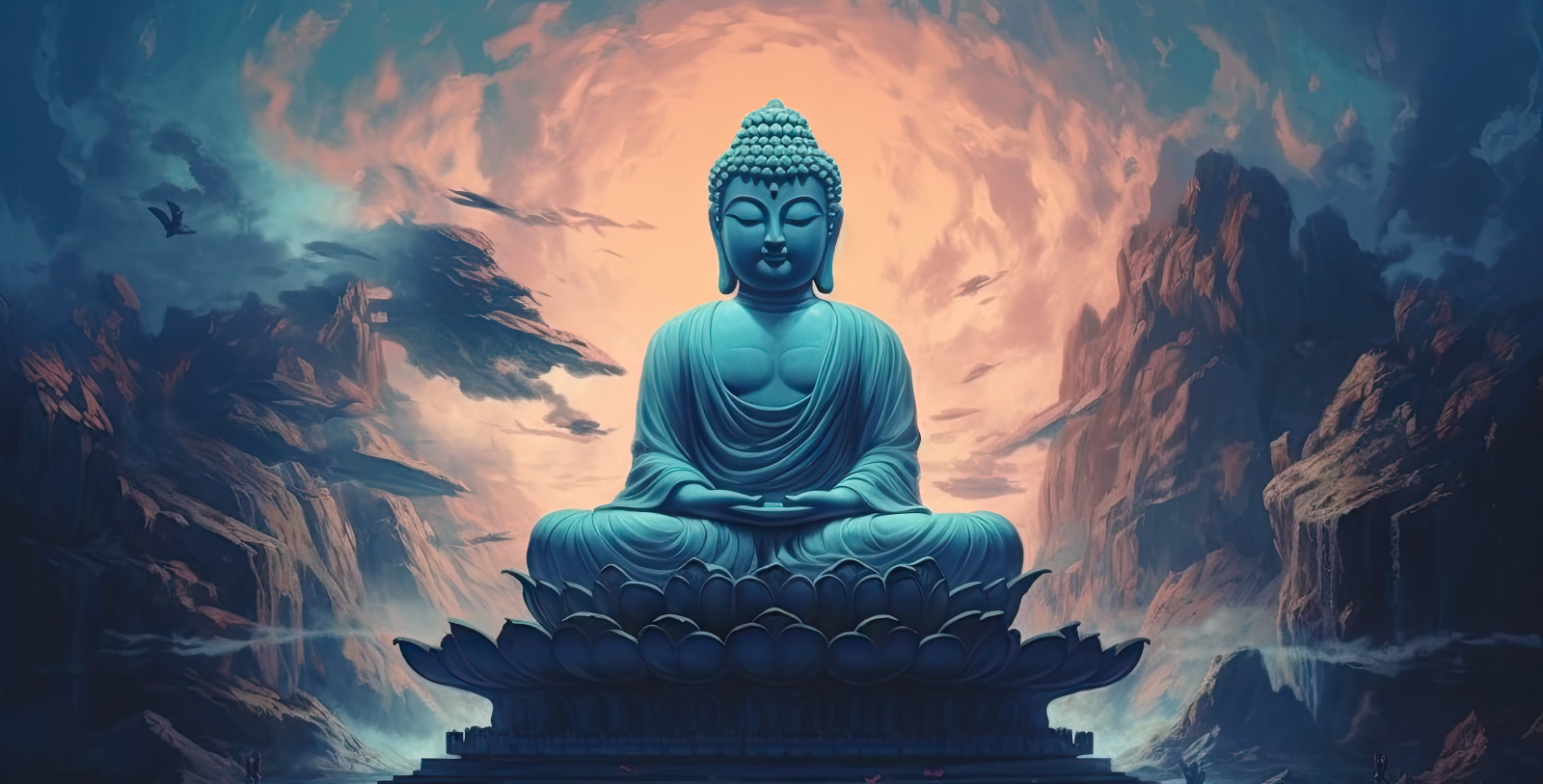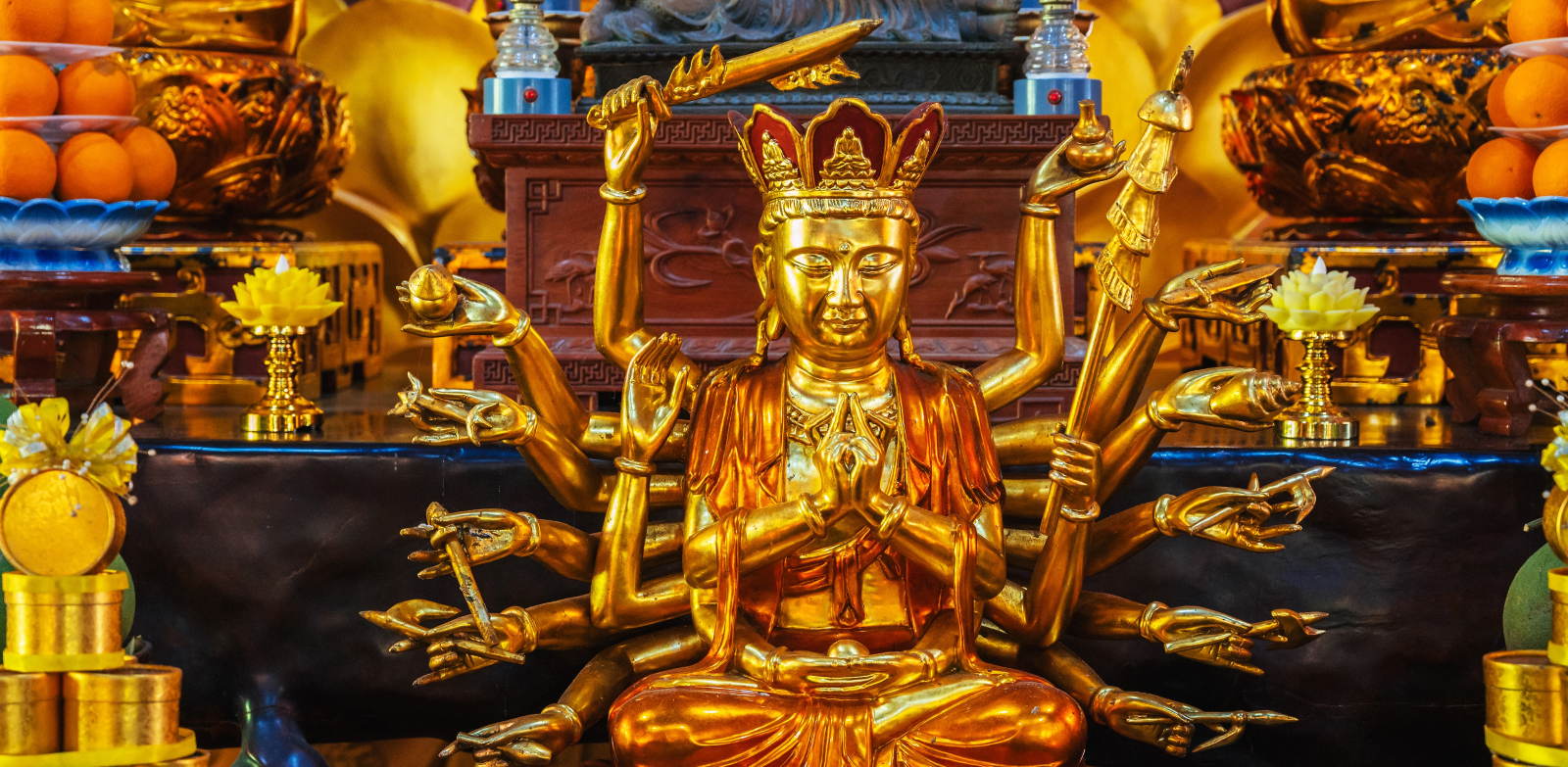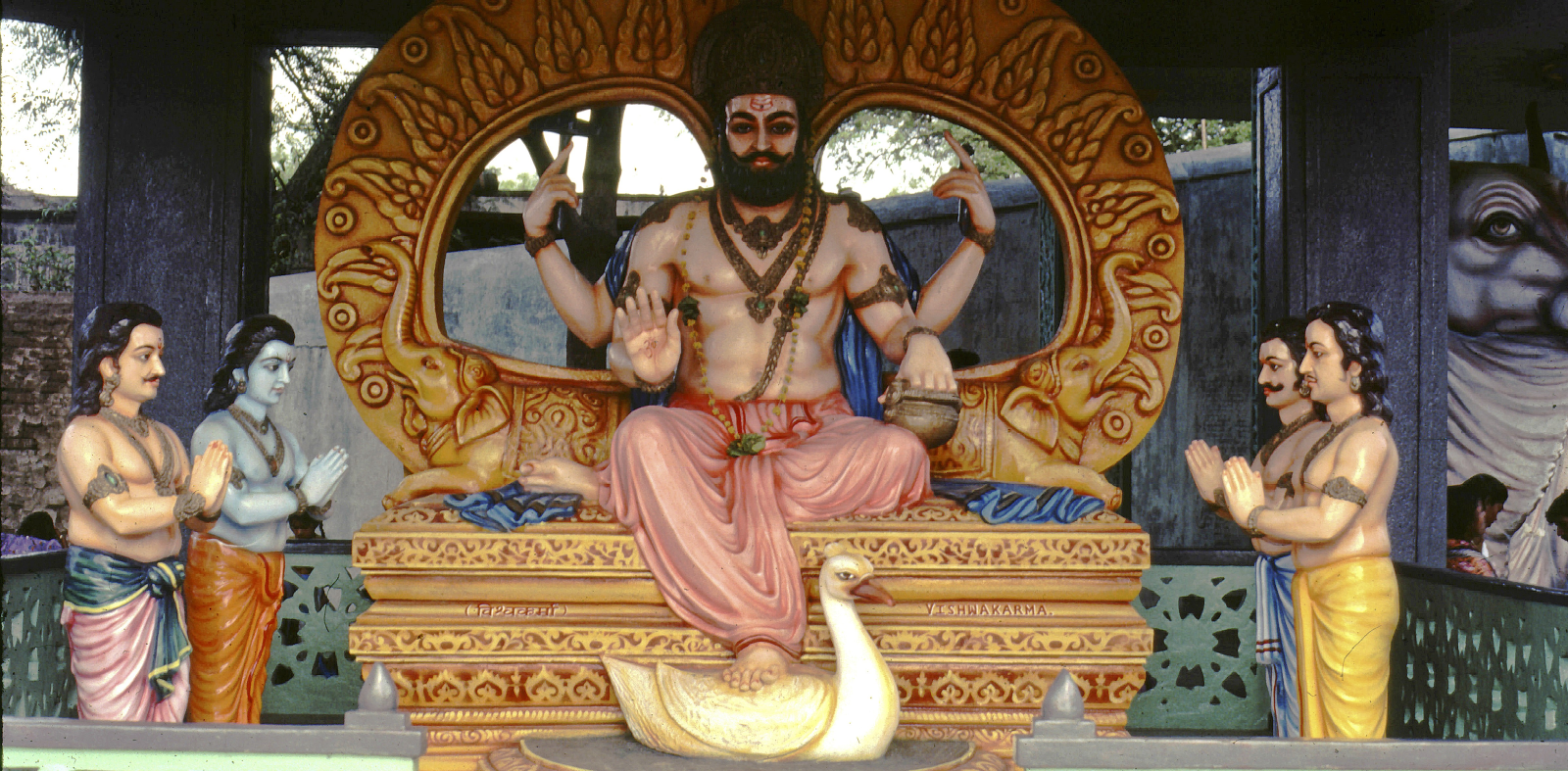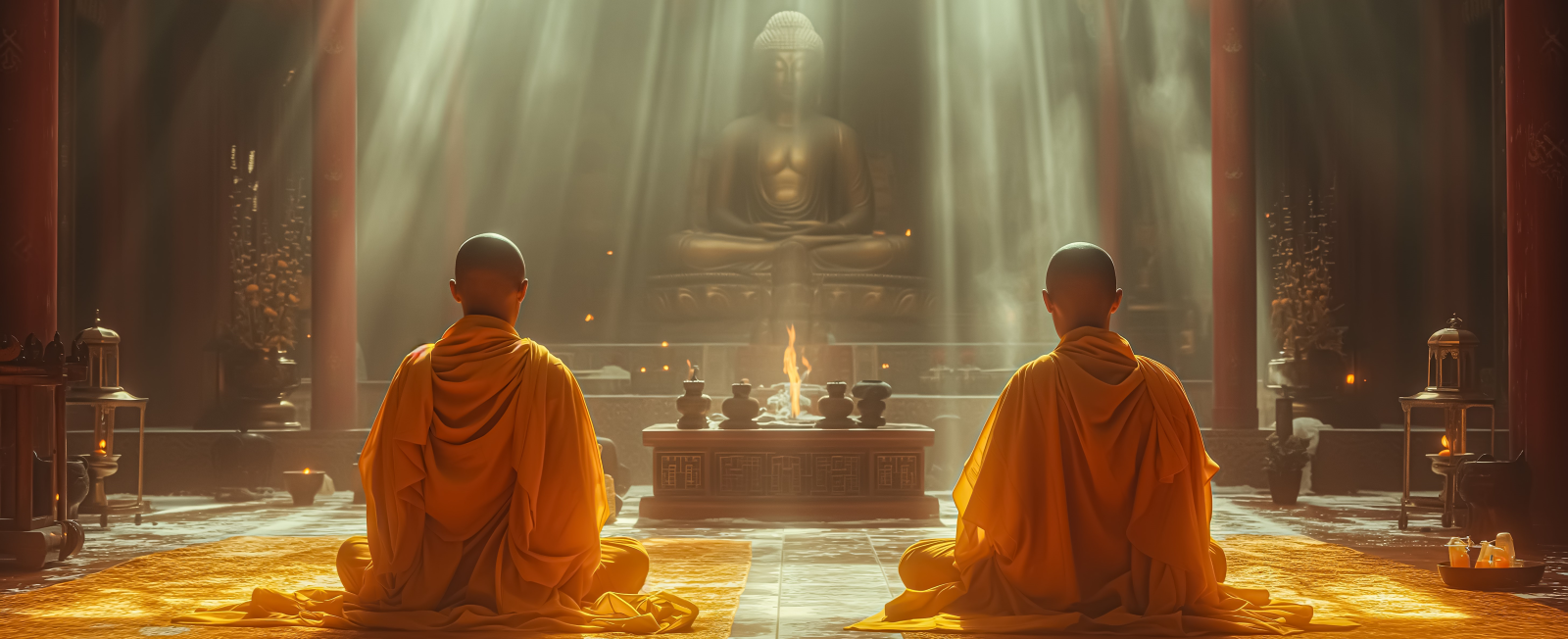The Tao’s Global Influence
Spiritual Traditions Shaped by Ancient Wisdom
Welcome to our exploration on Tao Influenced Religions and how Taoist principles have influenced spiritual traditions worldwide. The Tao’s profound wisdom about balance, harmony, and natural flow has resonated across cultures and centuries, enriching diverse religious practices and philosophical systems.

Buddhism: Finding the Middle Way
A Harmonious Relationship
Buddhism and Taoism share deep historical connections, particularly in China where these traditions have coexisted for centuries. Both emphasize:
- Present-moment awareness over preoccupation with afterlife
- Meditation practices for peace of mind and enlightenment
- Compassionate action and ethical living
- Balance and harmony as essential to spiritual growth
The Chan (Zen) school of Buddhism particularly shows Taoist influence in its emphasis on direct experience, spontaneity, and finding enlightenment in everyday activities.
Where They Diverge
While sharing many practices, Buddhism and Taoism differ in their core focus:
- Buddhism addresses the nature of suffering and its cessation
- Taoism emphasizes alignment with natural forces and cosmic harmony
- Buddhist practices often involve more structured meditation
- Taoist approaches may integrate more physical practices like qigong

Confucianism: Complementary Wisdom
The Three Teachings
In Chinese tradition, Confucianism, Taoism, and Buddhism are known as “the three teachings,” forming a complementary foundation for Chinese spiritual life:
- Confucianism provides ethical structure for social relationships
- Taoism offers balance, nature-connection, and spiritual freedom
- Buddhism brings compassion and techniques for mental transformation
Historical Interplay
Though sometimes positioned as rivals, Taoism and Confucianism have influenced each other for over 2,000 years:
- Confucianism focuses on social order and proper relationships
- Taoism emphasizes finding meaning through naturalness and spontaneity
- Many Chinese intellectuals historically practiced elements of both traditions
- The traditions balance each other: structure and spontaneity, social engagement and contemplative withdrawal

Vajrayana: Tantric Buddhism
Esoteric Practices
Vajrayana Buddhism, predominantly found in Tibet, Bhutan, Nepal, and Mongolia, incorporates elements that resonate with Taoist internal energy practices:
- The Sanskrit term “vajra” represents indestructibility, similar to Taoist concepts of cultivating the immortal spirit
- Both traditions work with subtle energy systems in the body
- Visualization techniques are central to both spiritual paths
- Both embrace the integration of seemingly opposite forces
Mantrayana Connection
Also known as Mantrayana due to its use of sacred sounds, this tradition shares with Taoism:
- Recognition of the power of sound vibrations
- Transmission of teachings from master to disciple
- Integration of physical and spiritual practices
- Techniques for transformation of consciousness

Kundalini: The Rising Energy
Universal Life Force
Kundalini, a Sanskrit concept meaning “coiled serpent,” describes dormant energy at the base of the spine that can be awakened through spiritual practice:
- Similar to the Taoist concept of cultivating and circulating qi (vital energy)
- Both traditions describe energy centers and pathways in the body
- Both offer practices to purify and strengthen the energy body
- Both aim for spiritual enlightenment through energy transformation
Practical Applications
Modern practitioners integrate elements from both traditions:
- Breathing techniques that enhance vitality
- Meditation practices that cultivate awareness
- Physical movements that balance and strengthen the energy body
- Ethical precepts that support spiritual development

Karmamudra: Tantric Practice
Sacred Union
Karmamudra (“action seal” or “love seal” in Sanskrit) involves the conscious use of desire energy for spiritual transformation:
- Echoes Taoist dual cultivation practices that work with yin-yang energies
- Both traditions recognize sexual energy as a powerful force that can be channeled
- Both emphasize the sacred nature of the body as a vehicle for enlightenment
- Both teach techniques for transmuting physical passion into spiritual realization
Beyond the Physical
In both traditions, these practices extend beyond physical interaction:
- Visualization techniques create similar energetic effects
- The ultimate goal is transcendence of duality
- Practices aim to unite wisdom and compassion
- Physical practices have corresponding internal meditation forms
Taoist Scriptures: A Global Legacy
Foundational Texts
Taoist scriptures have influenced religious and philosophical thought worldwide:
- Tao Te Ching: Translated into more languages than any book except the Bible
- Zhuangzi: Offers profound parables that have influenced literature and philosophy globally
- Liezi: Contains wisdom about relativity of perspective that resonates with modern physics
- Daozang: The Taoist Canon containing over 1,400 texts on various aspects of practice
Contemporary Impact
Taoist wisdom continues to shape modern spiritual movements:
- Environmental ethics and deep ecology
- Holistic health practices and traditional medicine
- Contemplative traditions across religious boundaries
- New Age spirituality and personal development approaches
Begin Your Journey
Whether you’re a scholar, practitioner, or simply curious about how ancient Taoist wisdom has shaped global spirituality, we invite you to explore further. Our resources and online community offer pathways to deeper understanding of these profound traditions.
Tao Influenced Religions
How has Taoism influenced Buddhism, particularly Zen Buddhism?
Taoism deeply influenced Chan Buddhism (Zen in Japan) by shaping its emphasis on spontaneity, simplicity, and naturalness. Taoist principles like wu wei (effortless action) and the idea of flowing with nature align closely with Zen’s focus on meditation, intuition, and direct experience over scriptures. The Taoist concept of emptiness (wu) also parallels Zen’s understanding of no-mind (mushin), promoting a way of thinking that is free from attachment and resistance.
In what ways has Taoism shaped Confucianism despite their differences?
While Confucianism emphasizes rituals, hierarchy, and social order, it has integrated Taoist ideas, especially regarding personal harmony, nature, and inner cultivation. During the Han Dynasty, Confucian scholars adapted Taoist ideas of yin-yang balance, applying them to ethics and governance. The Neo-Confucian movement blended Taoist cosmology with Confucian moral philosophy, promoting the idea that true wisdom comes not just from study but from aligning with the natural order (Dao).
How did Taoism influence Christianity in China?
When Christianity entered China, particularly through Jesuit missionaries in the Ming and Qing dynasties, Taoist ideas helped shape how Christian teachings were presented. The concept of Dao (the Way) was used to explain Jesus as the “Logos” (Word of God) in the Gospel of John. Additionally, Christian mysticism and Taoist spirituality share common themes, such as inner transformation, detachment from worldly desires, and the pursuit of divine union through simplicity and humility.
How has Taoism influenced New Age and Western spiritual movements?
Modern New Age spirituality, as well as Western practices like Tai Chi, Qigong, and alternative healing, draw heavily from Taoist teachings. The idea of energy flow (Qi), balance, and harmony has influenced concepts like mindfulness, holistic healing, and eco-spirituality. Many self-help philosophies also embrace Taoist ideas of letting go, flowing with life’s changes, and achieving success through non-resistance rather than force.
How does Taoism’s belief in balance and nature reflect in Shintoism?
Taoism and Shinto (Japan’s indigenous religion) share deep reverence for nature and harmony. Taoist cosmology influenced Shinto through its concepts of Qi (Ki in Japanese), yin-yang balance, and the belief that everything in nature has a spiritual essence. The idea of kami (spirits in Shinto) resonates with Taoism’s perspective on interconnected energies in the universe, leading to similar practices of ritual purification, seasonal festivals, and respect for natural forces.

